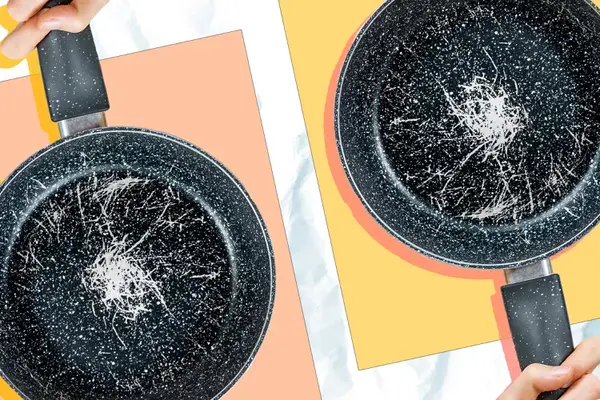Nonstick cookware, renowned for its ease of use, can pose health risks when misused. The coating on these pans, typically made of polytetrafluoroethylene (PTFE), can release harmful fumes when overheated.
Overheating nonstick pans to temperatures exceeding 500 degrees Fahrenheit can cause the PTFE coating to break down, releasing toxic fumes into the air. Inhaling these fumes can lead to a condition known as polymer fume fever, characterized by flu-like symptoms including fever, chills, coughing, nausea, fatigue, and headaches. While these symptoms usually subside within a day or two, individuals with underlying respiratory conditions may experience more severe complications.
It’s important to note that the number of reported cases of polymer fume fever has been increasing, although the actual number of cases is likely higher due to underreporting. While the majority of cases are linked to home use of nonstick cookware, occupational exposure and other sources can also contribute to the problem.
To minimize the risk of exposure, it’s crucial to avoid overheating nonstick pans. Using low to medium heat settings and proper ventilation can help prevent the release of harmful fumes. If you suspect you may have been exposed to PTFE fumes, consult with a healthcare professional.
Nonstick Pans: A Health Concern
Nonstick cookware, often coated with polytetrafluoroethylene (PTFE) or similar substances, has raised concerns due to the potential release of harmful chemicals. These coatings often contain perfluoroalkyl and polyfluoroalkyl substances (PFAS), a group of chemicals linked to various health issues, including cancer, immune system dysfunction, and reproductive problems.
When exposed to high temperatures, typically above 500°F, nonstick cookware can release toxic fumes. Inhaling these fumes can lead to a condition known as “polymer fume fever,” characterized by flu-like symptoms. While often temporary, these symptoms can be severe in individuals with underlying respiratory conditions.
The long-term health effects of exposure to PFAS and the fumes released from overheating nonstick cookware are not fully understood, as extensive long-term studies are lacking. However, the potential risks associated with these chemicals have prompted concerns about the safety of nonstick cookware.
It’s essential to use nonstick cookware cautiously, avoiding overheating and replacing damaged pans promptly. Consider alternatives like stainless steel, cast iron, or ceramic cookware for added safety.
Using Nonstick Pans Safely
To minimize the risks associated with nonstick cookware, it’s essential to use it properly and be aware of potential hazards.
- Avoid Overheating: The key to safe nonstick cookware use is to prevent overheating. Cooking at medium or low heat is generally sufficient for most cooking tasks.
- Proper Ventilation: Always use your kitchen exhaust fan when cooking with nonstick pans to help remove any potential fumes.
- Avoid High-Heat Cooking Methods: Techniques like searing or broiling are best suited for stainless steel or cast iron cookware.
- Avoid Damaging the Coating: Using metal utensils can scratch the nonstick coating. Opt for wooden, silicone, or nylon utensils instead.
- Regular Inspection: Regularly inspect your nonstick cookware for signs of damage, such as peeling, flaking, or chipping. Replace damaged pans immediately.
By following these guidelines, you can reduce the risk of exposure to harmful chemicals and enjoy the convenience of nonstick cookware safely.
Safe Alternatives to Nonstick Cookware
Given the potential health risks associated with nonstick cookware, many people are turning to safer alternatives. Here are some popular options:
- Stainless Steel: Known for its durability and versatility, stainless steel cookware is a popular choice. While it might require some initial practice to achieve non-stick properties, proper seasoning can improve its performance.
- Cast Iron: Cast iron cookware is renowned for its longevity and even heat distribution. It develops a natural non-stick coating over time with proper seasoning.
- Ceramic Cookware: This option offers a non-stick surface without the use of harmful chemicals. However, it’s essential to choose high-quality ceramic cookware as some products may contain low levels of lead or other contaminants.
- Carbon Steel: Similar to cast iron, carbon steel cookware develops a non-stick surface with use. It requires proper seasoning and care but offers excellent heat conductivity.
When selecting an alternative to nonstick cookware, consider factors such as durability, heat conductivity, ease of cleaning, and price. It’s also important to use appropriate cooking techniques and utensils to prevent damage to the cookware and ensure optimal performance.




